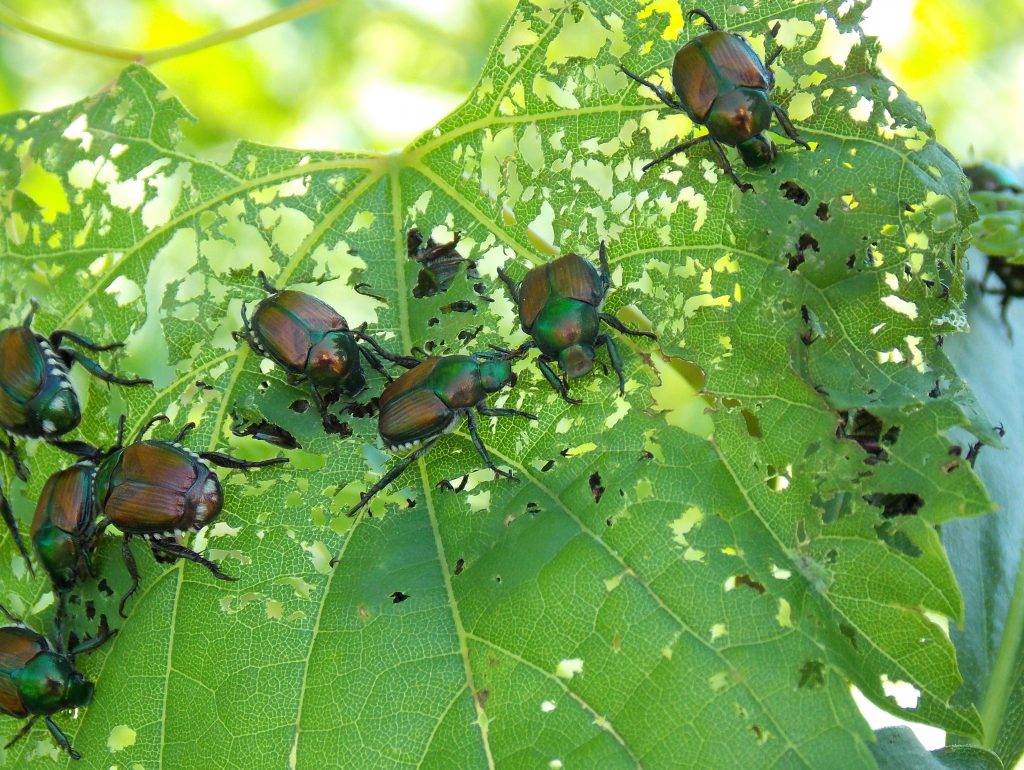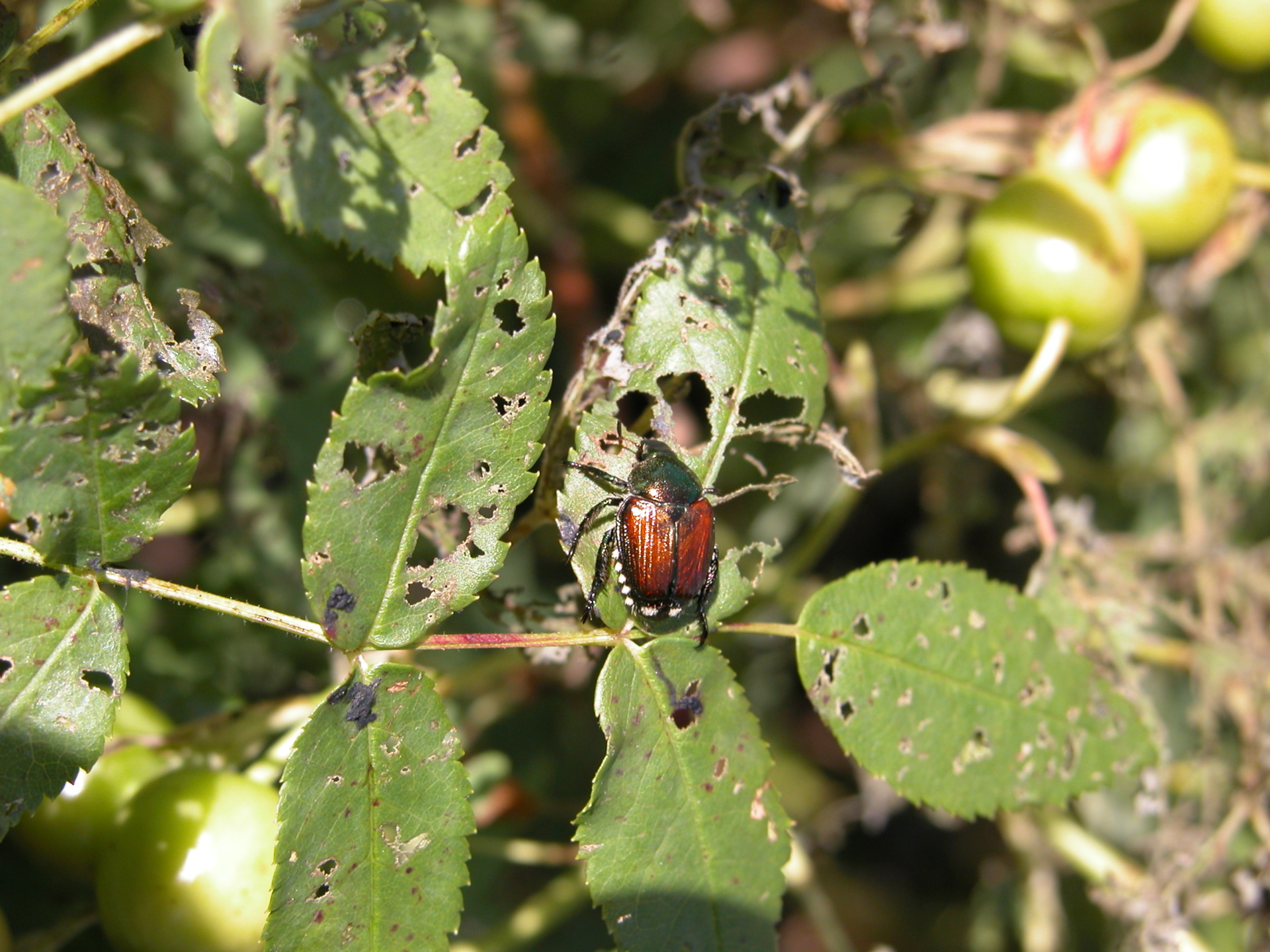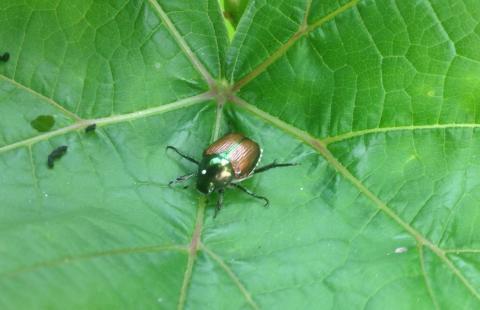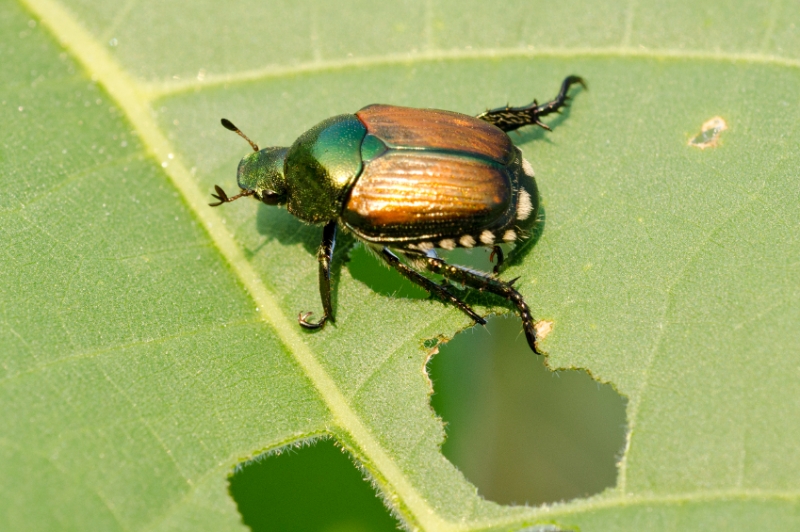japanese beetle life cycle illinois
Japanese beetles overwinter in the soil and as soil temperatures warm larvae move closer to the surface and pupate. The life cycle of the Japanese Beetles consists of four stages of development called complete metamorphosis.

Living With Japanese Beetles University Of Illinois Extension
Japanese beetle has a 1-year life cycle.
. Japanese Beetle Life Cycle Illinois. It was first found in the United States in 1916 and has since spread to most states east of and immediately to the west of the Mississippi River. There are many different options for managing Japanese beetles.
The adult beetles lay their eggs in late july into august and the eggs hatch shortly after. The eggs hatch into white grubs in ten days to two weeks or longer depend- ing on soil temperature. Adult Japanese beetles have a short lifespan.
The Japanese beetle Popillia japonica Newman is a highly destructive plant pest of foreign origin. Mating is common on the food plants during feeding and several matings by both males and females are common. Department of Agricultures USDA Agricultural Research st ines.
Japanese Beetle Life Cycle Illinois. Essex Ct Pizza Restaurants. Japanese beetle life cycle illinois.
However scientists with the US. After pupating adults begin to emerge from late-June to August. Adult beetles are most active on warm sunny afternoons.
Japanese beetles are annual white grubs and take one year to complete their life cycle. As soil temperatures warm in the spring the. Wide plant host range Adults can live up to 4-6 six weeks and Japanese.
Soldier For Life Fort Campbell. Income Tax Rate Indonesia. Female beetles lay eggs in the soil 3 inches below the surface of a lawn.
Japanese beetles have only one generation per year. Grubs hatch two weeks later and feed on grass roots. Opry Mills Breakfast Restaurants.
As soil temperatures warm to above 50F in the spring the grubs begin to move up into the root zone to feed. The Japanese beetle has a one-year life cycle spending most of its life in the soil as a grub. Adult beetles emerge in late June in southern Illinois and early July in central and northern Illinois.
Eggs hatch into large C shaped grubs that feed on plant roots. Japanese beetles that were present last summer laid eggs in moist soil covered with grasses turfgrass waterways roadsides etc. Adults begin to emerge in mid-June females lay eggs in July and August and as eggs hatch in the soil larvae feed on roots and decaying plant material.
The Japanese beetle Popillia japonica has an annual life cycle. Female beetles can lay between 40 to 60 eggs which hatch into grubs during early August. In fall grubs burrow into soil.
Orkin Termite Treatment Pest Control Exterminator Service. Restaurants In Matthews Nc That Deliver. Adults typically begin to emerge in late June or early July around 1000 growing degree days see University of Wisconsin Garden Facts XHT1086 Degree Day Calculation and can be found into September.
Adults emerge around June or July and immediately begin to feed mate and lay eggs. Visible along the sides of the body below the wing covers are a series of white spots formed. Japanese beetle adults are above ground eating leaves for about 6 weeks from mid-June into August.
Next year they form adults and start the vicious cycle again. Timing Life Cycle. For instance in its native Japan the beetles life cycle is two years long as a result of the higher latitudes of the grasslands required for the larval stage.
These stages are egg larva pupa and adult. Start by selecting plant species that are less desirable by Japanese beetles. They overwinter as third instar larvae in the soil below the frost line.
That is it takes one year to complete the development and growth from egg to adult and there is only one generation per year. They are 12 inch long heavy-bodied oval beetles that are metallic green with coppery wing covers. Usually by the end of July to early August the adult numbers have dropped off significantly.
Since larvae are about ½ to 1 inch. Each of the first two larval instars stages requires a feeding period of about three weeks. This life cycle takes a year.
30-45 days on average. After mating and feeding females lay eggs in moist actively growing lawns. The life cycle of the Japanese beetle is typically one year in most parts of the United States but this can be extended in cooler climates.
In spring grubs move up near the soil surface to finish feeding and pupate into adult beetles. A typical cluster of anese beetle eggs. The Japanese beetle adult--an attractive pest.
In spring the overwintering grubs move upward in the soil. United States Department of Agriculture. Japanese beetles overwinter in the grub stage.
The larvae feed on roots of grass and other plants close to the surface of the soil. Majestic Life Church Service Times. Japanese beetle season Life cycle The Japanese beetle has a one-year life cycle with adults typically appearing in late-June to early July here in Illinois.
Adult beetles emerge in early July and feed for four to six weeks on more than 300 species of plants. University of Illinois Extension service diagram. Rs of the Japanese beetle once it becomes established.
Life Cycle and Pest Identification. During the larval stage the white grubs. Japanese beetle grub University of Illinois Japanese beetle adults Japanese beetles have a univoltine life cycle one generation per year.
From mid-May to June the young larvae pupate. Grubs feed on plant and turfgrass roots until the arrival of cold weather which forces them to migrate deeper down in the soil profile.
Home Yard Garden Newsletter At The University Of Illinois

Two Male Dung Beetles The One On The Left Is A Minor And The One On The Right Is A Major Species Beetle Big Guy

Minimize Japanese Beetle Damage

Because Of Cold Winter We Ll See Fewer Japanese Beetles Home Garden Qctimes Com

Dealing With White Grubs In Lawns White Grubs Are The Most Serious And Destructive Lawn Insect Pest In Illinois While Not All L Lawn Lawn Care Business Grubs

Japanese Beetles Are Here To Stay How Can We Fight Back
Home Yard Garden Newsletter At The University Of Illinois
Heartland Outdoors Food Plotting Japanese Beetle Season

Japanese Beetles The Morton Arboretum
Home Yard Garden Newsletter At The University Of Illinois

Spotlight On Research Can Hand Picking Japanese Beetle Really Help Extension
Home Yard Garden Newsletter At The University Of Illinois
Home Yard Garden Newsletter At The University Of Illinois
Home Yard Garden Newsletter At The University Of Illinois

How To Get Rid Of Japanese Beetles In Your Yard

Plants That Japanese Beetles Don T Like Country Basket Garden Centre Niagara Garden


